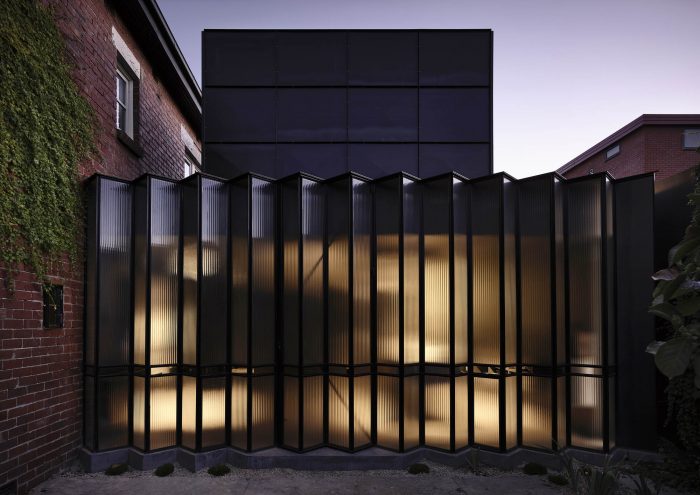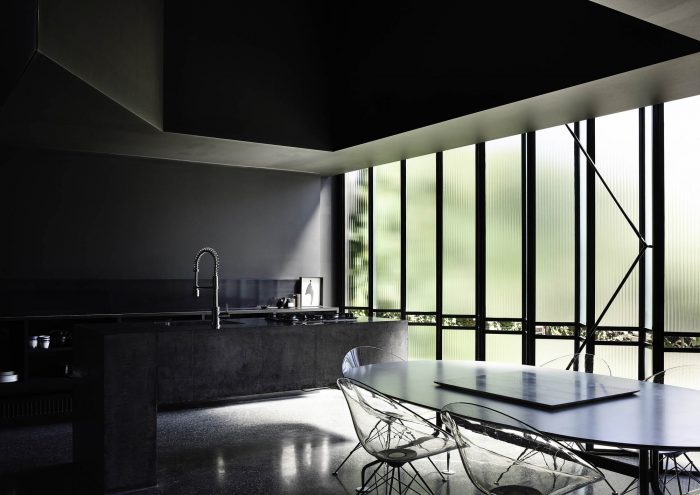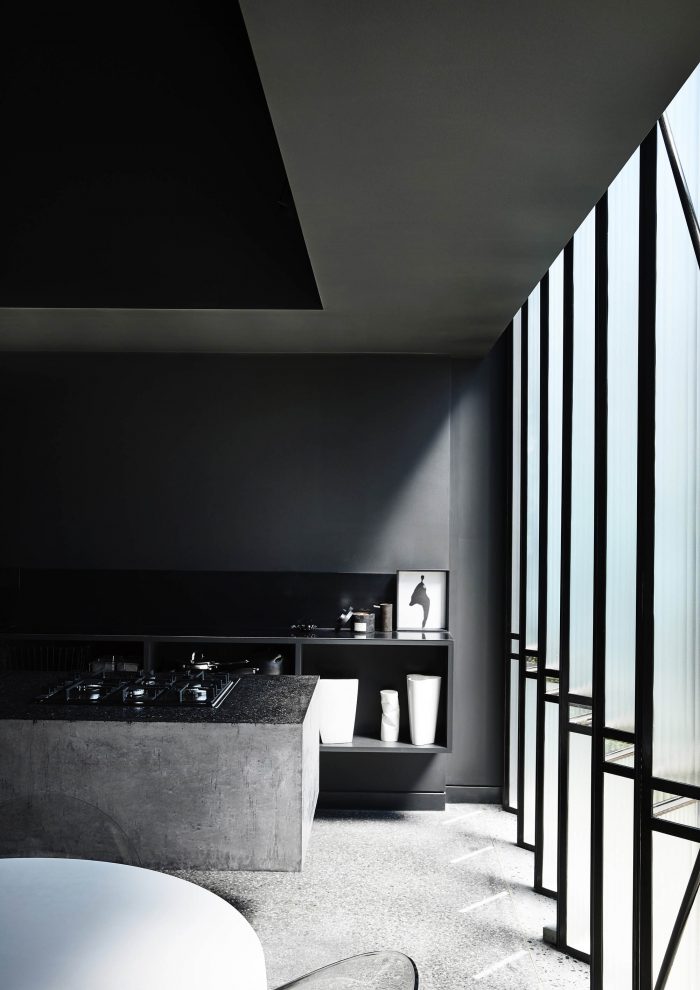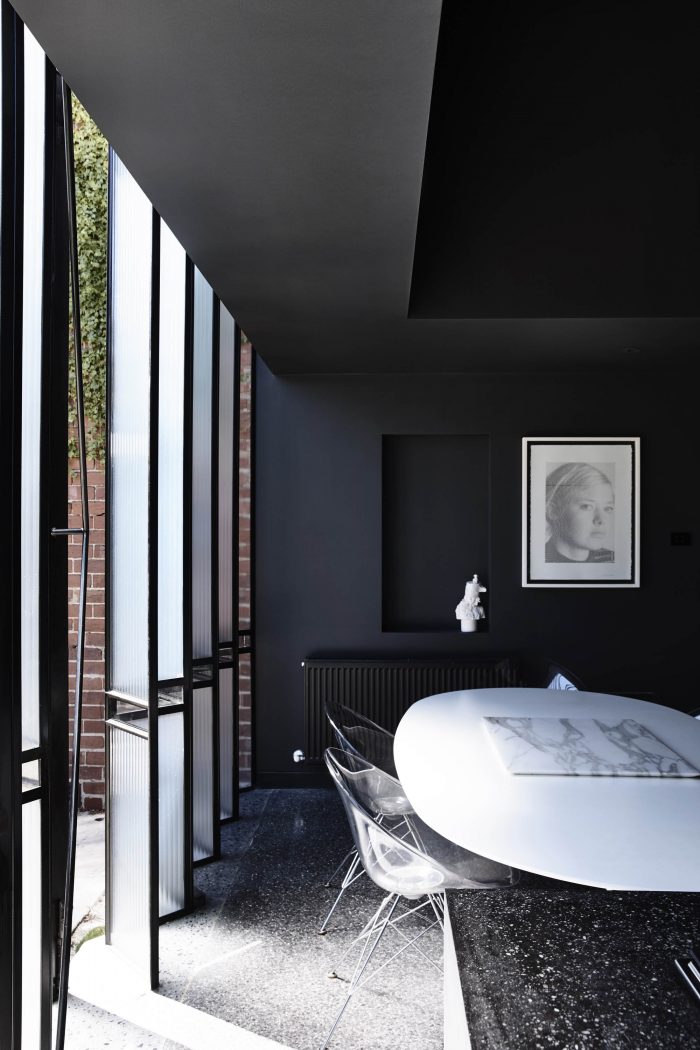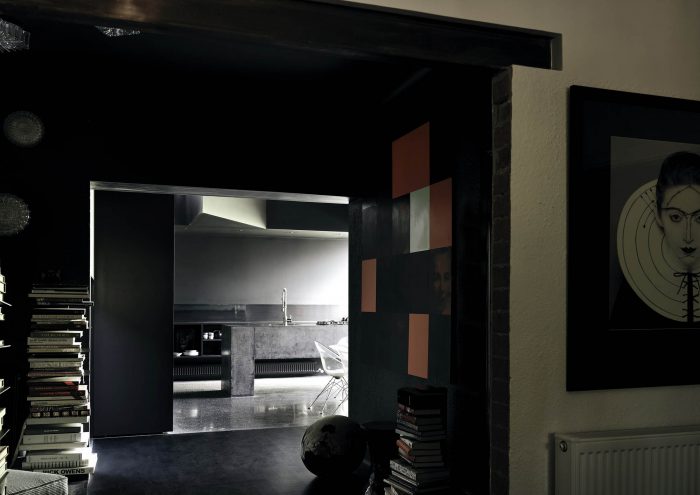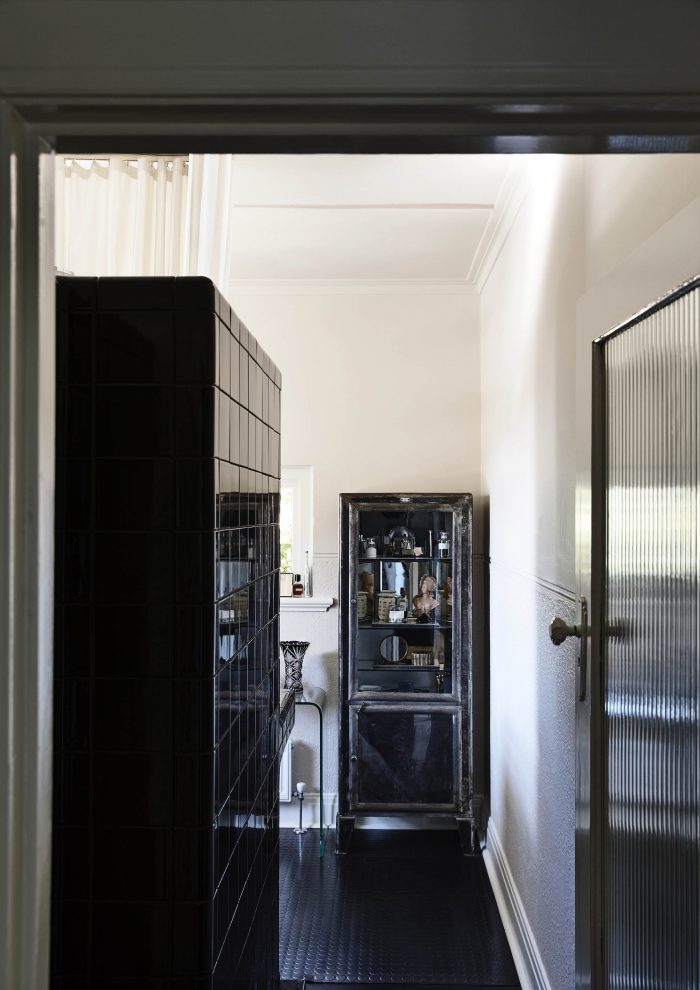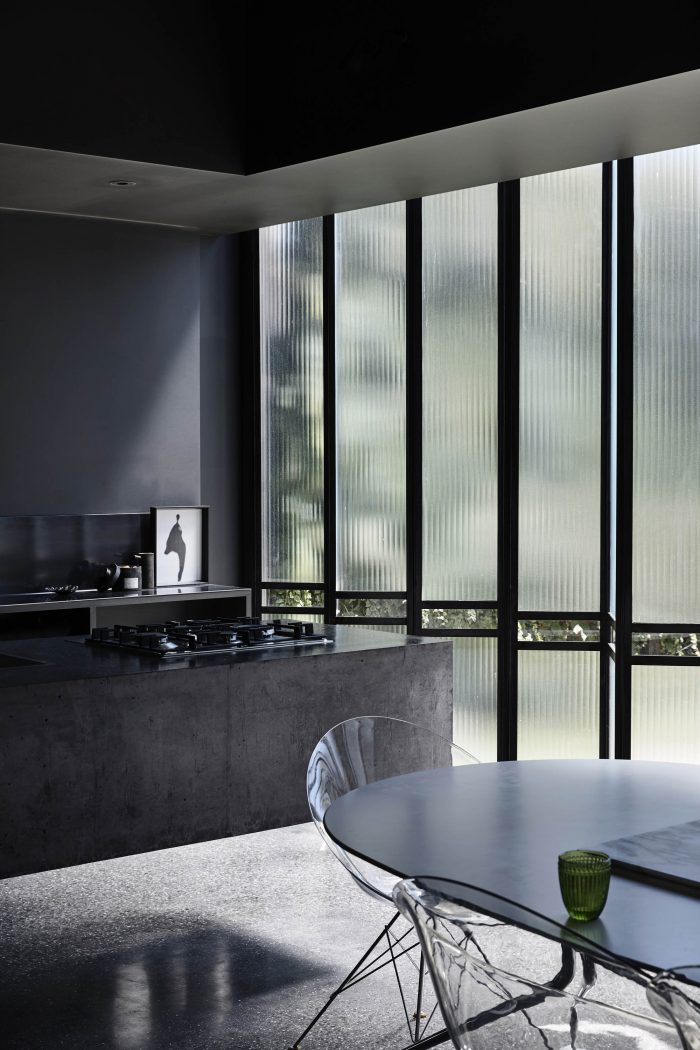鲍威尔街的房子在南亚拉的小街上占据了一个紧凑的场地,在这个口袋里有一个视觉上多样化的街景特征。现有的1930年的砖砌复式建筑,具有内敛的装饰艺术风格,包括一楼和一楼的公寓,每个公寓共享相同的平面图,并有自己的外部通道。
Powell Street House occupies a compact site in the side streets of South Yarra, in a pocket characterised by a visually diverse streetscape. The existing 1930’s brick duplex in a restrained Art Deco style, comprised a ground floor and first floor apartment, each sharing the same floor plan, and each with its own external access.
我们的客户是一位建筑和设计作家和他的伙伴,拥有不拘一格的艺术作品和家具收藏,已经在该物业居住多年,并希望将这两座住宅合并和扩大,形成一个有凝聚力的私人住宅。
Our clients, an architecture and design writer and his partner, with an eclectic collection of art works and furniture, had been living in the property for a number of years, and wished to unite and augment the two dwellings to form a cohesive single residence with a private aspect.
现有的房子有一个安静的内部和柔和的光线,设计是针对这一点而开发的,故意保持安静,并通过现有的浅层平面图创造长的对角线视图。 设计方法是尽可能地保留和尊重现有的结构,新的元素被视为干预措施,与原来的结构有明显的区别,同时尊重它。 尽量减少对原有结构的改动也是在有限的预算下取得成本效益的一种手段。
The existing house had a quiet interior and muted light, and the design was developed in response to this, with a deliberate quietness, and the creation of long diagonal views through the existing shallow floor plan. The design approach was to retain and respect the existing fabric wherever possible, with the new elements treated as interventions which were clearly distinguishable from the original fabric, whilst being respectful to it. Minimising structural alterations to the original fabric was also a means of achieving a cost-effective outcome on a limited budget.
餐厅、厨房和洗衣房设施位于场地后部的一个新增加的地方,有抛光的混凝土地板。厨房和用餐区通过钢架窗墙享受到物业后院的北面,该窗墙在平面上呈锯齿状,为新创造的空间提供了耐人寻味的光线质量。这个底层加建的空间形成了一个双层高度的体量,其中包括一个精心设置的高位窗户,被设想为一个安静的空间,在现有的和新的、外部的和内部的之间有模糊的联系。
Dining, kitchen and laundry facilities were located in a new addition to the rear of the site, with a polished concrete floor. The kitchen and dining area enjoy a northern aspect to the property’s rear courtyard, via a steel framed window wall, which describes a serrated profile in plan, and delivers an intriguing quality of light to the newly created space. This ground floor addition forms a double height volume, which incorporates a carefully located high level window, and was conceived as a quiet space, with ambiguous connections between the existing and the new, the outside and the inside.
一个紧凑的中央楼梯,采用深色的木材和原始的钢材,连接了建筑的两层,并位于每层的原浴室空间内,以尽量减少对内部改造的需要。卫生间的设计选用了能让人联想到1930年代原始房屋建筑的材料,包括在原地铺设的面盆,以及使用传统的浴帘,这些材料都是为了获得适度而感性的品质。
A compact central staircase, in dark stained timber and raw steel, connects the two previously separated levels of the building, and was located within the former bathroom space to each level, to minimise the need for internal alterations. Bathrooms were designed with a selection of materials evocative of the 1930’s architecture of the original house, including basins tiled in-situ, and the use of traditional shower curtains, selected for their modest yet sensuous qualities.
加建部分和新的建筑元素一般都是在现有的结构中插入的,并与原来的材料性有神秘的联系。 在形成或修改开口的地方,这种改变是以一种留下原始痕迹的方式进行的。通过新的钢窗,利用透明和不透明玻璃的组合来限制和策划视线,使用狭长的花纹玻璃,同情房子的原始时代。 内部颜色的选择是为了连接各个空间,并对整个房子不同的体积和光线条件做出反应。
The addition, and the new architectural elements generally, read as insertions within the existing fabric, and connect enigmatically with the materiality of the original. Where openings have been formed or modified, such alterations have been executed in a way which leaves clear traces of the original. Views were limited and curated through the new steel windows utilising a combination of clear and opaque glazing, using narrow reeded patterned glass, sympathetic to the original era of the house. Internal colours were selected to connect the spaces and respond to the varying volumes and light conditions throughout the house.
Architects: Robert Simeoni Architects
Year: 2020
Photographs: Derek Swalwell
Lead Architect: Robert Simeoni
Architects:Robert Simeoni Architects
City:South Yarra
Country:Australia



